The Red River, specifically the Red River of the South, is a massive river that runs through many states. The color red isn’t very appealing, especially when swimming. Is the Red River red? Can you swim in it? Follow along to discover what’s in the Red River and if it’s swimmable.

What is the Red River?
The Red River of the South is unique in the southern United States. Interestingly, it was once a tributary of the Mississippi River. However, it’s now a tributary of the Atchafalaya River. It’s 1,360 miles long and has a basin size of 65,595 square miles. This massive river goes through Louisiana, New Mexico, Texas, Oklahoma, and Arkansas. One of the best places to view the Red River is Palo Duro Canyon in Palo Duro Canyon State Park.
Interestingly, parts of the Red River are salty, especially tributaries above Lake Texoma. This is because there used to be an inland sea in the area and now what’s left are salt deposits. The Red River of the South acts as a natural boundary between Oklahoma and Texas. Although the River River is known for its reddish color, it’s not always red. However, it’s redder during flooding as the reddish color comes from the soil. This river has many tributaries and 2 bayous.
The Red River has been used for a long time by Native Americans, the Spanish, and early American settlers. Sometimes, it’s confused with the Red River of the North. But, that river is shorter, only stretching about 550 miles. This river was also the site of the Red River War. It was a war against indigenous Americans, to take their land and relocate them.
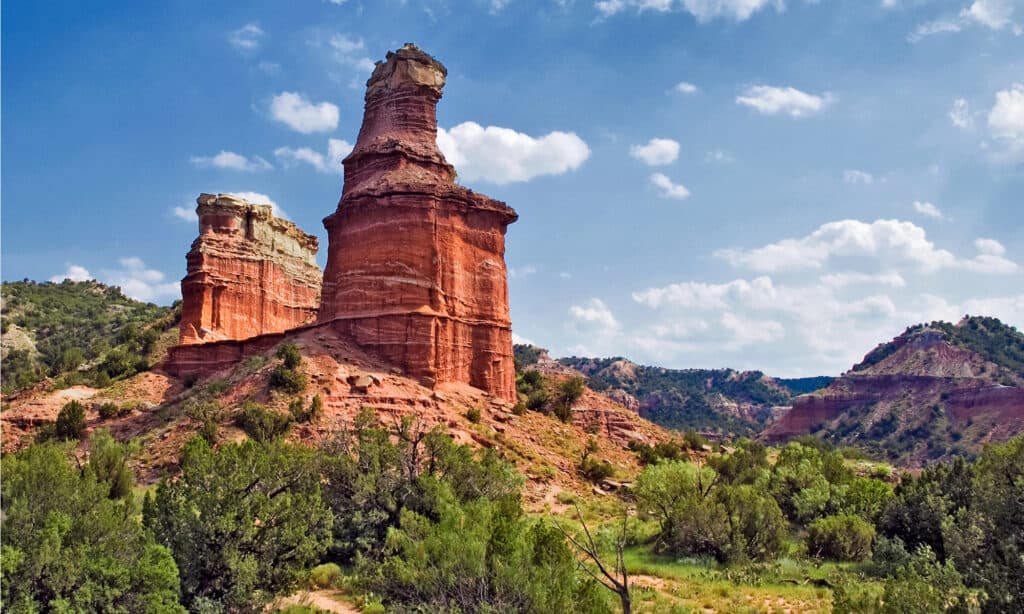
The Red River of the South runs through the Palo Duro Canyon State Park.
©xradiophotog/Shutterstock.com
Can You Swim in the Red River?
If you’re thinking of swimming in the Red River of the south, take precautions and swim at your own risk. There are a few swimming holes in the river that are safe, but most of the river is harsh and winding. You can easily get swept away by its rushing waters. Sadly, there have been reports of people drowning in the Red River or falling in and never being found. Because of the rushing currents, it can be dangerous and hard to search. The floors are murky and the depth changes frequently without much warning. If you ever fall into a rushing river, try to remain calm. Panicking only worsens the situation and can tire out your muscles. Instead, follow the river’s flow as it can lead to a river bank.
What’s in the Red River?
Now that we know more about the Red River, we can dive into the animals that call it home! Although swimming can be dangerous, fishing is a popular activity along the Red River. You can even take a boat into the river to look for fish. Apart from fish, many birds travel there in search of food or shelter. Follow along to learn about the animals in the Red River of the south.
Rio Grande Turkey
An animal you may find wandering around the Red River is the Rio Grande turkey. This turkey species is found throughout Texas. Female Rio Grande turkeys are smaller than males weighing about 5.5 to 12 pounds. Interestingly, wild turkeys are great fliers. They are fast and can fly for about a quarter of a mile close to the ground. Rio Grande turkeys have long legs and forage for nuts, berries, and insects.

Rio Grande turkeys are common in Texas.
©Brent Coulter/Shutterstock.com
Blue Catfish
Blue catfish are large North American catfish weighing up to about 150 pounds. These fish are opportunistic hunters and mainly consume fish, frogs, and crawfish. Blue catfish live for about 10 years. They are very popular with anglers. The largest blue catfish ever caught weighed 143 pounds and was 57 inches long.
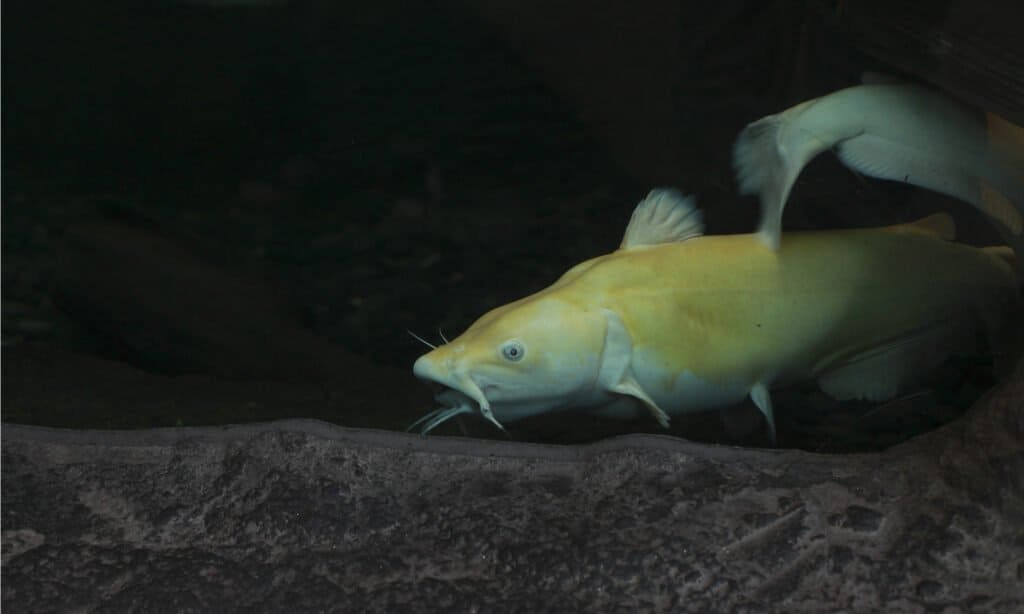
The largest blue catfish caught weighed 143 pounds.
©Brandy McKnight/Shutterstock.com
Largemouth Bass
Largemouth bass are abundant in the Red River. Anglers love fishing for largemouth bass since they are powerful swimmers and put up a fight. Largemouth bass, as their name suggests, have large mouths. They grow quickly. In just their first year, they grow 4 to 6 inches.
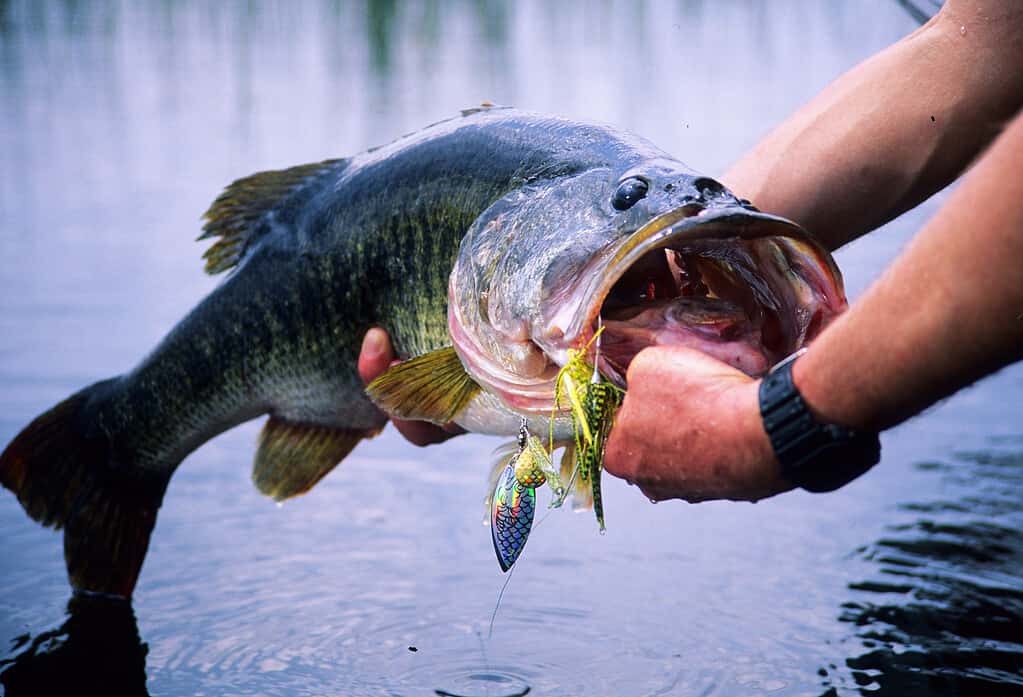
Largemouth bass are fast growers.
©iStock.com/stammphoto
Alligator Gar
Another fish you can find in the Red River is the alligator gar. They are large and long fish known for their alligator-like appearance. Alligator gars are the largest of the gar species. They can easily reach 8 feet long. Alligator gars have minimal predators. They are massive with a tough hide that’s difficult to pierce. Despite their size and many teeth, alligator gars don’t attack humans. They are slow and cautious.
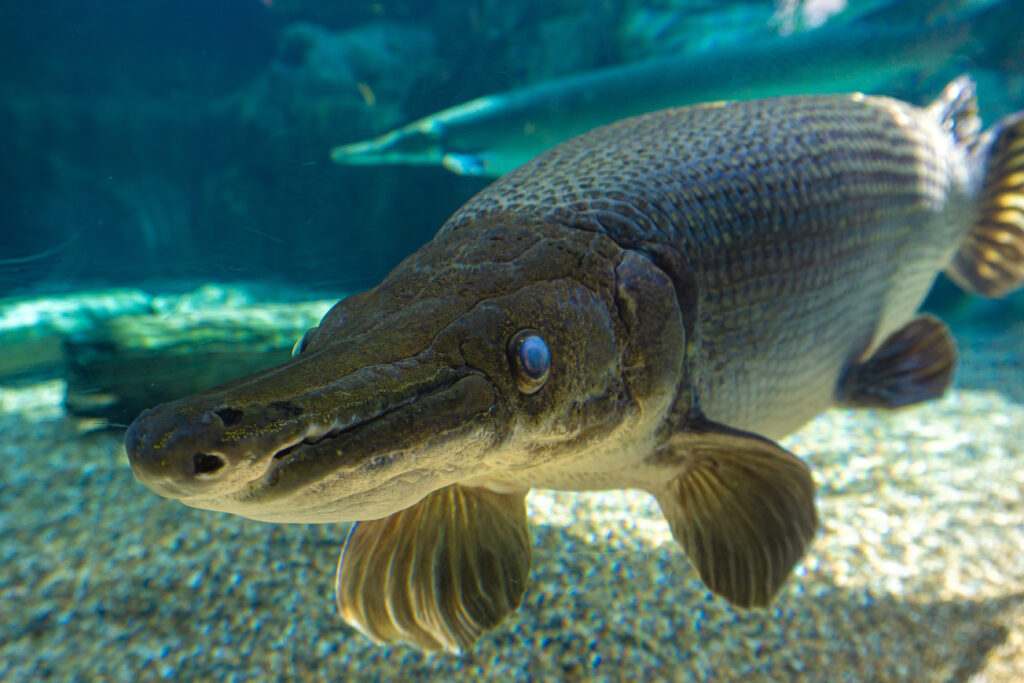
Alligator gars can reach 8 feet long.
©TKBackyard/Shutterstock.com
Blue-winged Teal
Apart from fish, you can also see many beautiful birds near the Red River, including the blue-winged teal. They are part of the family Anatidae. Blue-winged teals are common in Texas. These birds are about 16 inches long and have a large wingspan. It’s more common to see blue-winged teals on the shoreline instead of in the river. Blue-winged teals feed on vegetative matter and insects.
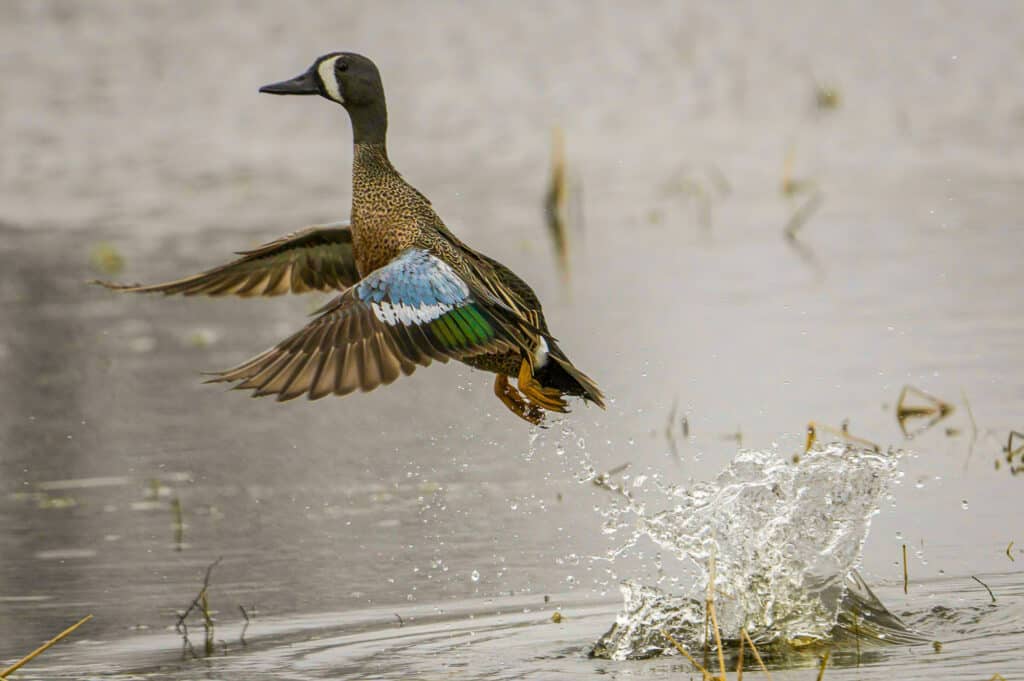
Blue-winged teals are members of the Anatidae family.
©iStock.com/Brian Reinke
The photo featured at the top of this post is © Bob Pool/Shutterstock.com
Thank you for reading! Have some feedback for us? Contact the AZ Animals editorial team.






